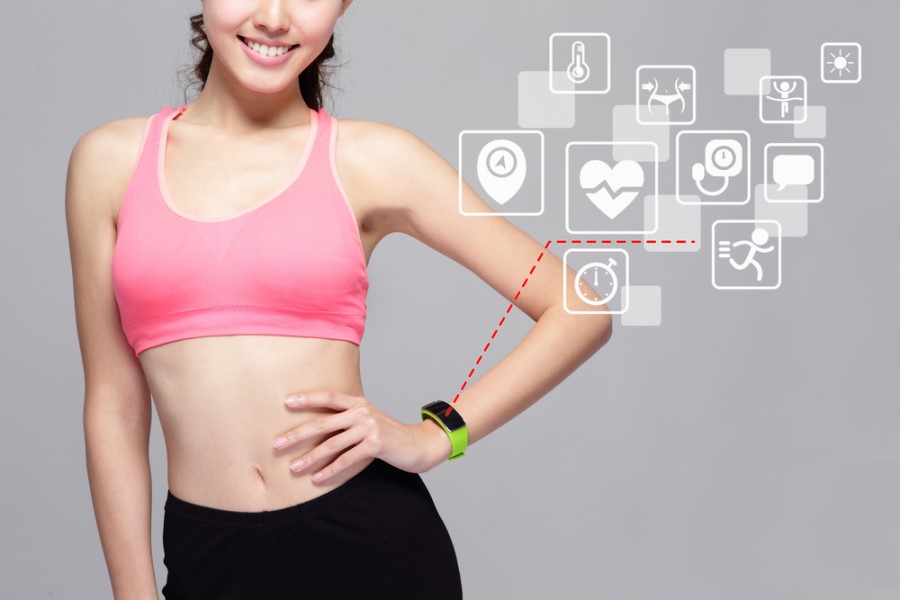Why employers are turning to professional wearable tech

Some people find that the technology doesn’t provide sufficient motivation to exercise, though. Recent academic studies caution that wearables can only help the most motivated users; that 10,000 steps won’t make you healthy; and that some heart-reading inaccuracies have led to weight gain.
But the next generation of health and wellness wearables are already tackling these problems. They are part of a holistic revolution in healthcare that focuses on more than just heart rate or step count – and, this time, employers are the early adopters as professional wearable technology starts coming into its own.
Wellness, wearables and work
Most people take some interest in their own health and wellbeing, even if they actually do little about it. But it’s employers who are taking a leading role in maintaining the health of their employees – and professional-grade wearables are playing a key role. According to Tim Wright, UK commercial director for physiological analytics firm Firstbeat, it’s human resource learning and development teams rather than occupational health, employee benefits or private medical insurers who are primarily driving cutting-edge preventative health initiatives.
By 2017, 35 per cent of health-conscious employers in the US were using wearable devices to develop effective, value-driven corporate wellness programmes for employees. They recognise the need for a holistic approach to health and wellness that goes beyond simply encouraging healthy habits and providing discounted gym memberships. And technology is leading the way.
The tech of tomorrow, today
The conventional way that consumer wearables monitor heart rate is from the wrist – they measure blood-flow pressure by shining light onto the skin and sensing how it reflects. However, this method is challenging. Results tend to vary depending on the individual, situation and intensity of motion, making accuracy more difficult.
Professional wearable devices use a different method: the electrocardiogram (ECG). They measure the potential energy needed for electricity to move between living cells that is generated by the heart’s electrical signals. These gadgets give experts more accurate, reliable measurements and consistent results across situations and people.
While the typical consumer products track steps, sleep and calories burned, professional wearables can measure stress – recovery and activity data is used to show stressful moments, as well as possible underlying reasons. Used in tandem with a mobile app diary like HRV Trace, the client’s feelings can be compared to objective, quantifiable data. For example, by using the Firstbeat Bodyguard HRV device with a personal mobile diary, it’s easier to see the impact of a person’s daily food, exercise and alcohol choices on stress, sleep, recovery and other health indicators.
Key to the success of professional wearables is how the data is collected and used. While many people look at their collected data in isolation, employers are using health and fitness trackers within a holistic wellness system to inform lifestyle decisions. This approach aims to offer the best health outcomes rather than target a specific goal such as losing weight – though it can also help people define and manage their goals.
The innovation is as much about application as it is technology. While consumers must independently interpret the biometric data their trackers give them, in an employee wellness scheme, specialists analyse data and make recommendations for employers. For example, some companies are using data to help address employee stress, fatigue, burnout, anxiety and even suicidal risk.
The stats have it
A 2015 Firstbeat lifestyle assessment of an integrated wearable and support initiative reported that respondents gained valuable information about personal stress factors (55 per cent), recovery (63 per cent) and physical activity habits (32 per cent). A full 79 per cent made one or more positive lifestyle changes that supported their wellbeing.
A February 2018 study by the NHS on key human performance indicators found how data from wearables allows us to compare our perceptions with objective data. Called a Lifestyle Assessment, it allows organisations to map behaviours and feelings against physiological responses. With more than a billion data points from 100 different NHS organisations covering about 1,500 days and nights, the assessment provided insights into how nurses, doctors and others feel and are coping.
The results show how even health professionals who are trained to assess other human beings are out of tune with themselves. The findings from an aggregated cohort of more than 500 NHS workers show that there is a considerable difference between people’s perceptions and objective data. For example: 63 per cent thought they were doing enough physical activity to be healthy, but only 28 per cent were.
“Data only has benefit if it leads to the development of thoughts and focuses individuals on areas of their health they may want to improve on, and organisations on employee health and wellness areas they may want to support,” says Fit for Leadership CEO William Ker Tyler. “If the workforce that powers the NHS – those trained to assess human beings – are often out of tune with themselves, then it is important to allow them to have the occasional moment to think about themselves and encourage team leaders to create a culture where people are supported in doing so.”
The benefits of digital tech and virtual health for expats
Digital technology can play a large and positive role in the lives of expatriates in particular. Achieving and maintaining good health and wellness poses specific challenges for the globally mobile – from sufficient access to quality care to language barriers, to structuring a healthy lifestyle and diet after relocation.
Wearables like fitness trackers can help expats maintain a healthy lifestyle. And the growing use of virtual health services is making a real impact.
This article was provided by Aetna.
In partnership with Aetna
Aetna is re-shaping and improving health care across the globe by developing solutions.






